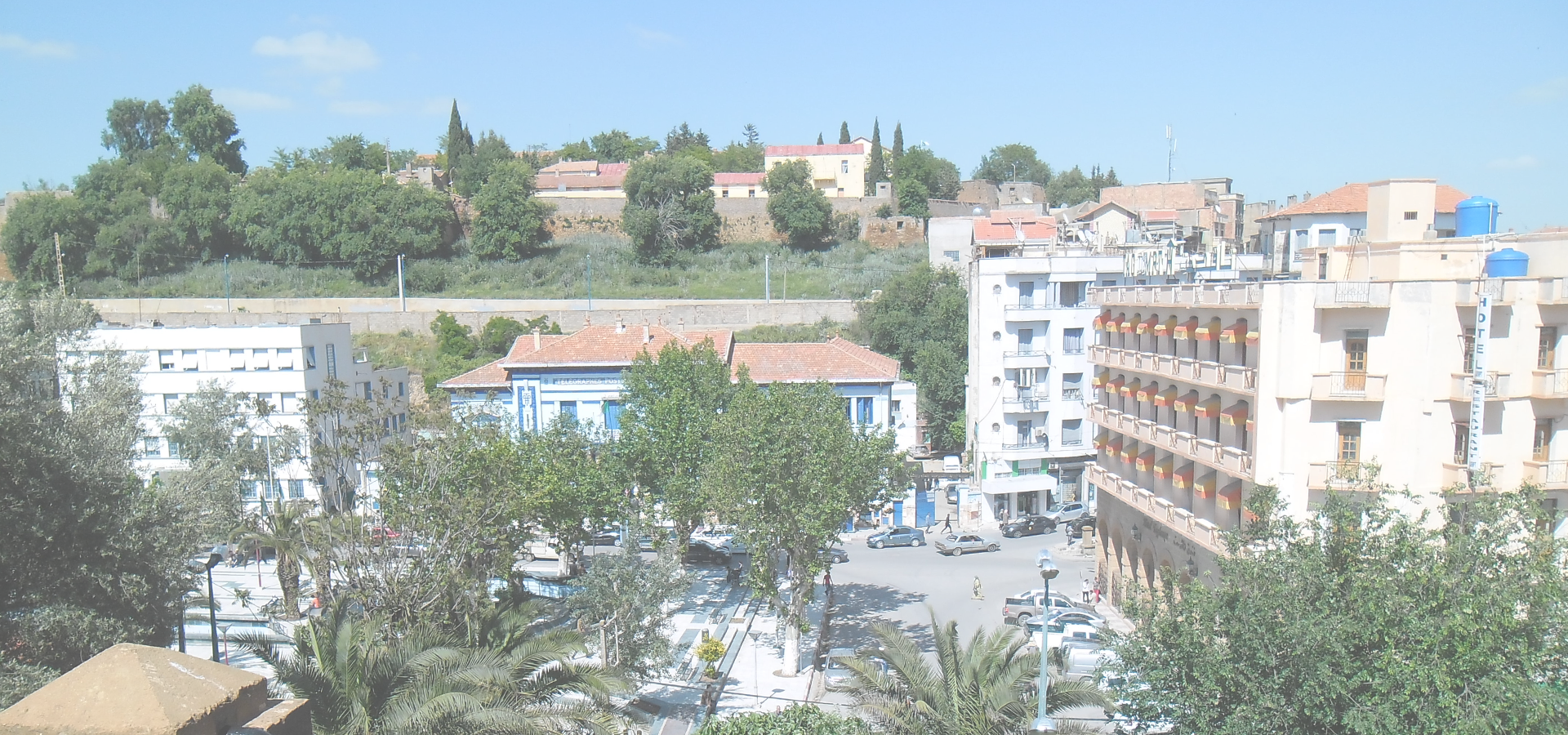Tiaret, Algeria
🇩🇿 Tiaret (Arabic: تيارت) or Tahert (تاهرت) is a major city in north-western Algeria that gives its name to the wider farming region of Tiaret Province. Both the town and region lie south-west of the capital of Algiers in the western region of the Hautes Plaines, in the Tell Atlas, and about 150 km (93 mi) from the Mediterranean coast. It is served by Abdelhafid Boussouf Bou Chekif Airport.
Etymology The name means "Lioness" in the Berber language, a reference to the Barbary lions that lived in this region. Maghrebian place names like Oran (Uhran) which means "lion", and Souk Ahras which means "Market of Lions" have the same etymological source.
Economy: Industry A 1992 study by the University of Nice Sophia Antipolis reported significant areas contaminated by industrial pollution, and growing squatter settlements on the periphery.
The region is predominantly one of agriculture. There is a large airfield with a tower and terminal at Abdelhafid Boussouf.
The Institute of National Studies of Tiaret holds 25,000 volumes in its library.
History The province has been inhabited since antiquity, and there are numerous megalithic monuments. It served as a Roman station and fort, Tingartia. Near Tiaret are the jedars, which are ancient mausoleums. The edifices demonstrate that the area was inhabited during the Late Antiquity by a Berber tribe(s) that could build in stone.
Tiaret grew up as a site under the domination of small Berber tribal kingdoms; the first of these being the Rustamid dynasty between 761 and 909 when Tiaret served as the capital of the area. However, this capital may have been 10 km (6 or 7 miles) west of the present-day Tiaret. It was first founded by Abd al-Rahman ibn Rustam, an Ibadi theologian from Greater Iran. Tiaret was said to be relatively free-thinking and democratic, being a centre for scholarship that permitted a wide range of sects and movements, notably the Mu'tazila. There were many Jews living in the area until at least the 10th century, including the scholar and doctor Judah ibn Kuraish who became the doctor to the Emir of Fes. Tiaret was captured by the Fatimids in 909.
Tiaret occupies a strategic mountain pass at 3,552 feet (1,083 m), and was thus a key to dominating the central Maghreb. Later, from the start of the 8th century, it was the key northern terminus of the West African branch of the slave trade. As such, it offered a lucrative income from taxes on the trade, and was a desirable prize.
The Rustamid empire, which during the reign of Abdurrahman (766–784) and his son Abdul Wahab (784–823) extended over the greater part of the modern Algeria, was known as the Ibadite Empire from Abdallah ibn Ibad, the founder of the sect to which Abdurrahman belonged. Seven princes of the Rustamite house succeeded Abdul Wahab until they were overthrown by the Fatimite general Abu Abdallah al-Shi'i in 909.
From the year 911 Tiaret was fought over by a number of tribes, being first captured by Massala ibn Habbus of the Miknasas in the year 911, in alliance with the Fatimid Caliphate. Finally, in 933, it was in the hands of the Fatimids. After 933 Tiaret ceased to be the capital of a separate state. Most of the population was banished to Ouargla and then escaped to the inhospitable M'zab. From 933 Tiaret attracted many Khawarij Muslim settlers from Iraq.
From 933 it was administered as part of the Kingdom of Tlemcen, and in the 16th century fell to the Ottoman Empire. In 1843 it fell to the French after they defeated Emir Abdelkader El Djezairi.
The modern town of Tiaret is built around a French redoubt of 1845. The new town attracted many settlers from France and the area flourished. A 200 km (120 mi) narrow gauge railway arrived in 1889, connecting the town to Mostaganem - today, this rail line is defunct.
Archeological attractions Thirty km (18 miles) S.S.W. of Tiaret are the sepulchral monuments known as the Jedars. The name is given to a number of sepulchral monuments placed on hill-tops. A rectangular or square podium is in each case surmounted by a pyramid. The tombs date from the 5th to the 7th century, and lie in two distinct groups between Tiaret and Frenda.
At Mechra-Sfa ("ford of the flat stones"), a peninsula in the valley of the river Mina not far from Tiaret, are said to be "vast numbers" of megalithic monuments.
Africa/Algiers/Tiaret_Province

Tiaret has a population of over 178,900 people. Tiaret also forms the centre of the wider Tiaret Province which has a population of over 842,060 people.
To set up a UBI Lab for Tiaret see: https://www.ubilabnetwork.org Twitter: https://twitter.com/UBILabNetwork
🇺🇸 Rutherfordton 35.367
🇯🇵 Kakamigahara 35.383
🇺🇸 Fort Smith 35.387
🇺🇸 Huntersville 35.401
🇺🇸 Bakersfield 35.367
🇧🇯 Natitingou 1.367
🇫🇷 Les Andelys 1.419
Locations Near: Tiaret 1.31667,35.3667
🇩🇿 Sougueur 1.5,35.183 d: 26.3
🇩🇿 Relizane 0.55,35.733 d: 80.4
🇩🇿 Aïn Defla 1.97,36.265 d: 116
🇩🇿 Mascara 0.133,35.4 d: 107.3
🇩🇿 Mohammadia 0.067,35.583 d: 115.7
🇩🇿 Mostaganem 0.083,35.933 d: 128
Antipodal to: Tiaret -178.683,-35.367
🇹🇴 Nuku'alofa -175.216,-21.136 d: 18397
🇦🇸 Pago Pago -170.701,-14.279 d: 17538.2
🇼🇸 Apia -171.76,-13.833 d: 17522.3
🇵🇫 Papeete -149.566,-17.537 d: 16525.5
🇺🇸 Hilo -155.089,19.725 d: 13403.1
🇺🇸 Maui -156.446,20.72 d: 13352.3
🇺🇸 Honolulu -157.85,21.3 d: 13342.2
🇺🇸 Maui County -156.617,20.868 d: 13343.3
🇺🇸 Pearl City -157.969,21.394 d: 13336.5